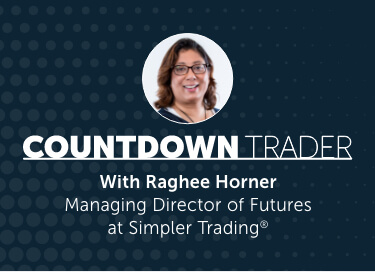What To Do After Volatility Events…
In this video, we’re gonna talk about how to use defensives so that you can handle volatility events like a pro. You can sleep at night and still have great trades in your book, but without worrying about the markets ending and appending your account.
So let’s talk about a scenario that could happen, and we had a recent one, and they happen again and again and again.
That’s typically around any Federal Reserve Chair Jerome Powell event or any FMC Federal Reserve event.
Powell recently spoke at Jackson Hole, Wyoming, and this is an annual multi-day meeting where we get an economic outlook from the Federal Reserve members and it usually is accompanied by a lot of volatility.
Any type of power event is going to affect interest rates at 10 years and 30 years. We know that tech, NASDAQ mostly, but also the S&P and then all the different sectors like semiconductors and communications, consumer discretionary, cyber security are also sensitive to volatility around interest rate volatility.
This an inverse relationship so if interest rates go up that usually puts a lot of weight on tech. That’s what makes traders nervous in an environment where tech has been leading the charge higher. So that scene is not one that’s isolated to the Jackson Hole symposium, it’s one that we’re gonna see multiple times per year.
So what do we do?
Well, we get defensive, and that means we look at things like staples, XLP/ XLU. Now think about the kind of stocks that are in utilities. Usually they’re going to be more sedate names, oftentimes, they’re gonna be higher dividend yielding names. They’re going to be names that are dominated by Next Era, Duke Energy, Southern Company, Dominion, these kinds of names.
When you take a look at staples, think about what kind of name? What kind of stocks are heavily weighted within staples? Again, staples have a lot of higher dividend yielding names, which usually have some longer term holds. People aren’t so twitchy to dump Pepsi, Walmart or Costco, they’re gonna usually hang on to those, so you have some resiliency.
Procter and Gamble, Coke, Philip Morris, Atria, there’s stability there.
So they’re not gonna be the hottest corner of your portfolio when markets are going higher, but what we’re talking about here is reducing draw down and reducing risk while still having a good trade and a good trend in your book of trades.
So in this case, what we did going into that Jackson Hall, we said, “Look, is there a trend here?”
That answer is, absolutely.
We’re not just randomly buying staples to hide for cover, we’re still looking at a good trade, and here was that trade as the market sunk down to the wave in front of Jackson Hole, and you can see the same thing happening in utilities.
So again, don’t look for utilities and staples to outperform semi-conductors and cyber security, that’s not why we’re buying them. We’re buying them one, because it’s a good trend and we’re buying them, two, if the broader indices, S&P and NASDAQ roll over, a lot of times it’s staples and utilities. They both will benefit from that panic, from that fear.
Remember, there’s always an uptrend somewhere, we have to think about the way in which the scales of fear and greed move money around. What we’re taking advantage of here is when the scales for fear start to overtake that scale for greed.
What benefits?
So here you have a dip into the wave twice, double green market, and that’s what we buy. So the next time you’re feeling like, “Well, maybe Powell or some event is going up and the trends in the NASDAQ or the Dow or the S&P…”
Before you start picking a top and really putting your money in peril by doing a very low-probability type trade, think about going defensive. Think about the XLU and XLP ETF, think about the individual stocks, and this is the kind of thing that we did in the Sector Secrets Mastery to control risk.
I still have two very nice profitable trades, and still able to hold a position through these types of volatility events.



